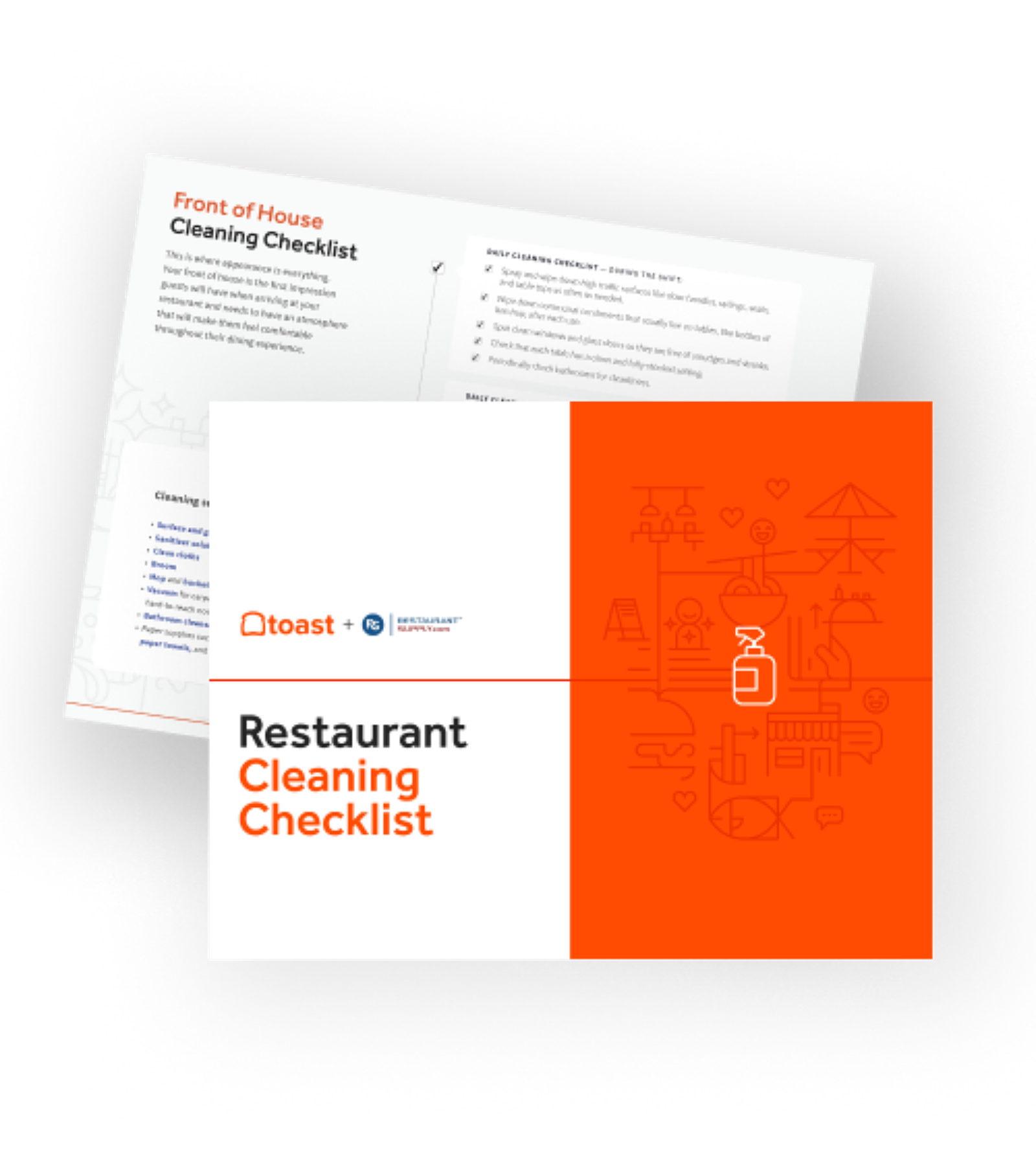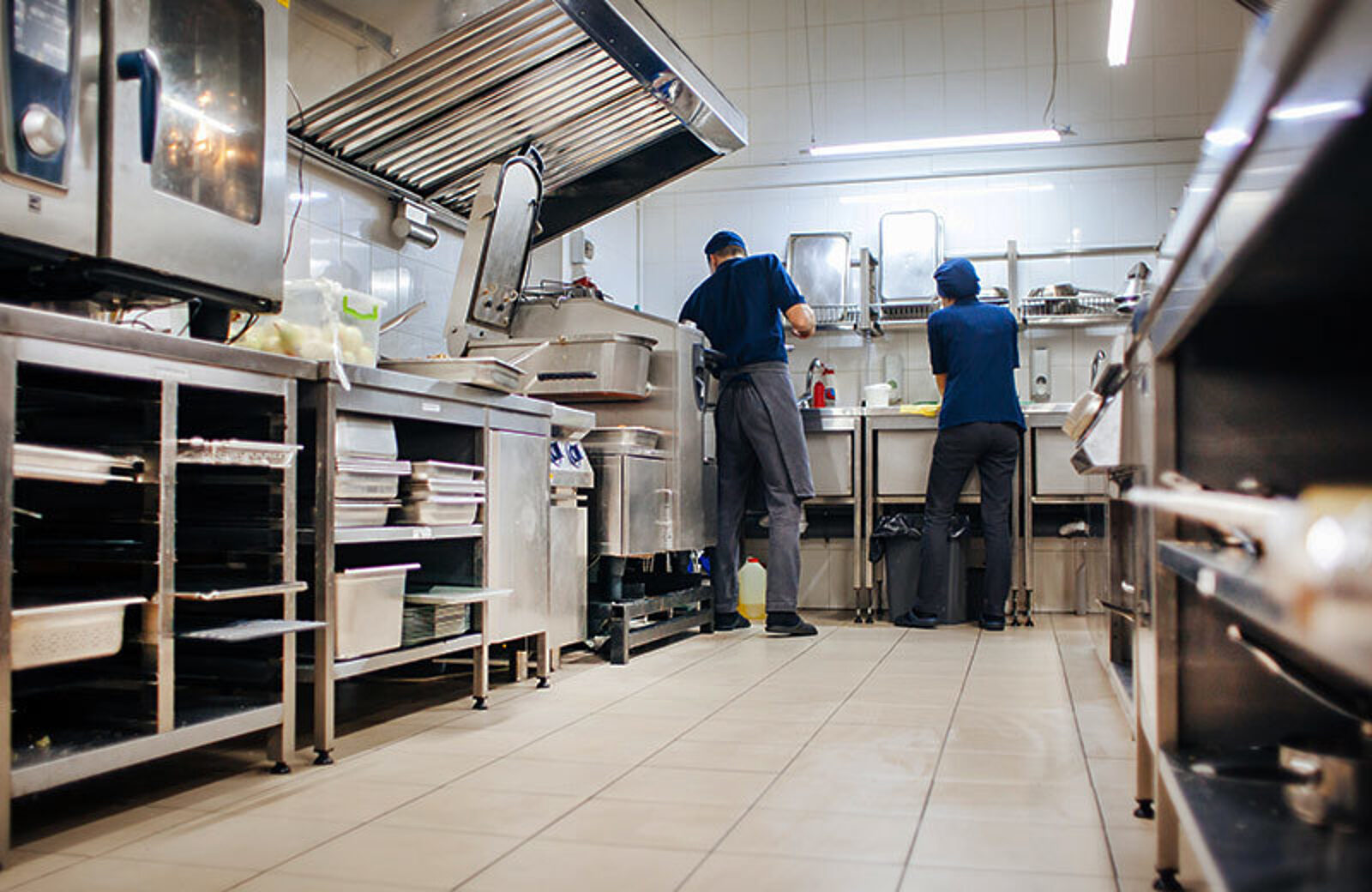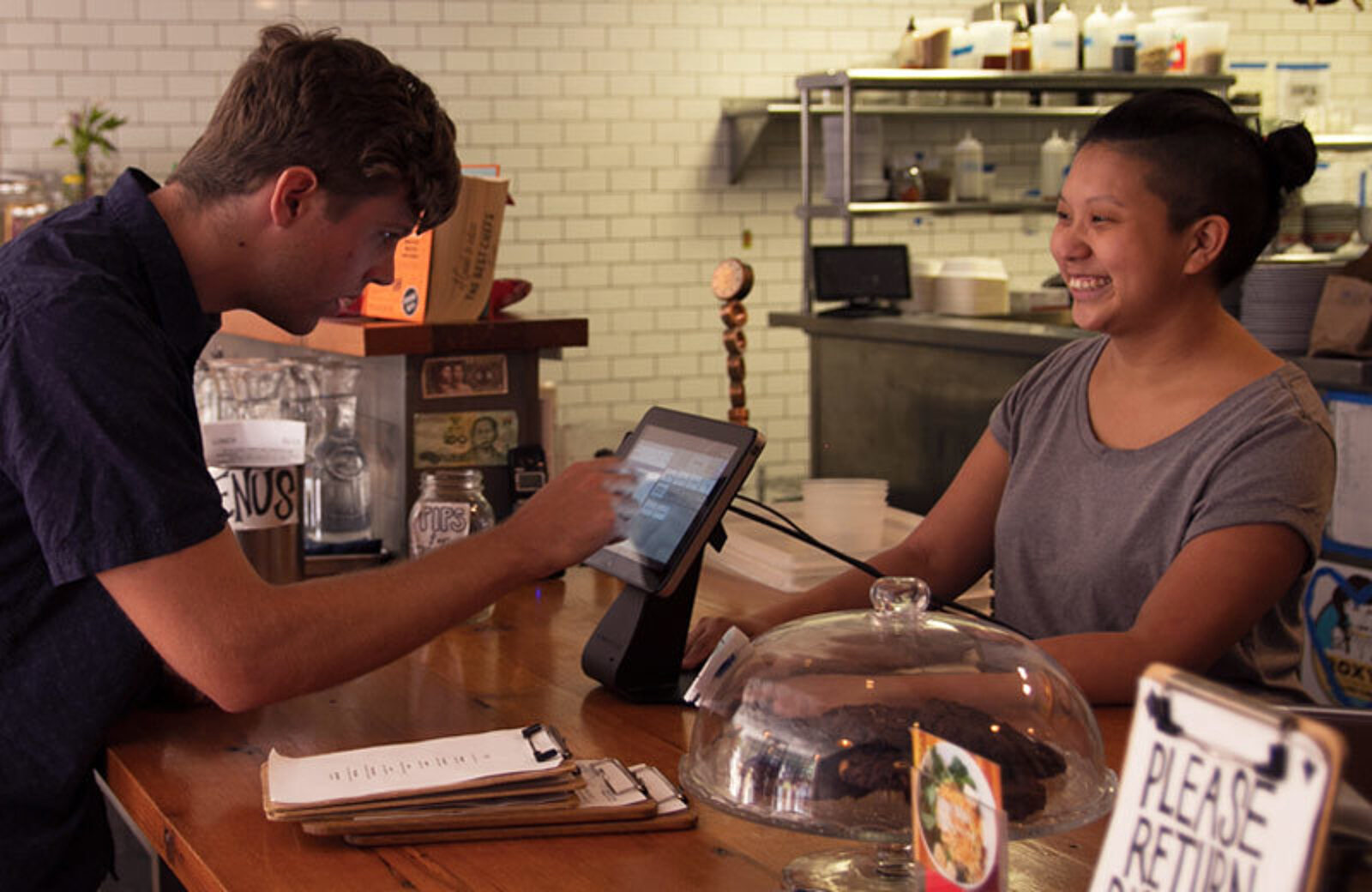
How to Train Kitchen Staff to Prevent Cross-Contamination
Ramp up your new hire training to get your team the information they need to prevent cross-contamination in your restaurant.

Dahlia SnaidermanAuthor


Restaurant Cleaning Checklist
Download the Restaurant Cleaning Checklist, created in partnership with RestaurantSupply.com, to keep track of the cleaning tasks that need to be completed in your restaurant.
When you open a restaurant, the aim is to create a space where you can give your customers a great experience — amazing service, exciting food, and beautiful design can all contribute. However, you also have the responsibility of providing a safe environment for your diners. One big way that restaurants fail to do so is through a lax approach to food safety and cross contamination.
Often, this has to do with rushed training. If your new hire training consists mostly of “here’s someone to shadow … best of luck,” you may not be providing them with all the information needed to be a great employee, least of all to prevent cross contamination.
A thorough training program — including a great training manual or employee handbook with a section about food safety and cross contamination — takes time to build. But your effort will pay back in spades when you know that your staff are doing everything in their power to keep your customers safe.
Frequent training also contributes to employee satisfaction. If you provide a great onboarding procedure as well as regular, ongoing training to help your employees do their jobs well and advance in their careers, they’re more likely to be engaged at work and stick around. And a happy, engaged employee will be way less likely to cut corners when it comes to food safety.
What is Cross Contamination?
Cross contamination is when bacteria from one ingredient contaminates another ingredient (or dish), causing harm to the person who eats it.
Eliminating cross contamination is crucial to preventing food poisoning and other food-borne illnesses like E. Coli and salmonella, and can also help prevent allergic reactions.
When training your employees, emphasize that cleanliness matters more than speed. It may be perceived as an odd rule, as few chefs want to encourage anything but total efficiency from their staff. However, adding a minute of extra time to your workflow is preferable to having to worry that your staff are cutting corners and could make someone sick. You’ll also have less to worry about when the health inspector comes around.
Some restaurants require their staff to complete formal food safety training, which can usually be done online. In fact, it’s mandatory in some states. Some restaurants pay for their staff to go through these programs.
You can also download printable food safety resources for your restaurant here.
If one of your customers gets sick from eating at your restaurant, not only will you have failed to provide a great experience for all your guests, but you’ll probably also be staring down a terrible Yelp review. You could also get shut down or sued if you’re found in violation of health codes.
With all that in mind, we’ve divided this guide into two sections: first, we’ll discuss cross contamination and allergies, and then we’ll explain how to avoid cross contamination that can lead to food poisoning.
Restaurant Cleaning Checklist
Download the Restaurant Cleaning Checklist, created in partnership with RestaurantSupply.com, to keep track of the cleaning tasks that need to be completed in your restaurant.

Cross Contamination and Allergies
What makes dealing with allergies so difficult is that, depending on the allergen, there’s a good chance that much of your kitchen may already be subject to cross contamination. For example, nuts aren’t a danger for most people, so it’s normal for your cooks to just brush off a surface where they chopped walnuts and move on. However, this means that anything prepped on that surface, until the surface is thoroughly washed and sanitized, will be contaminated with nuts. The same goes for wheat allergies, which is even tougher because tiny flour particles can easily get everywhere.
Cross-contamination of allergens can happen everywhere in the kitchen — in walk-in fridges or freezers, on utensils, on flat-top grills, in deep-fryers, on prep surfaces, in prep table fridges where open containers of prepared foods are nestled together, and on the pass, to name a few. All foods leave behind traces in all these areas, unless you’re cleaning everything thoroughly between each dish, which is impossible during the rush of service.
It’s up to you to know which allergies you can accommodate and have a clear restaurant allergy policy. Then, you must train your front-of-house staff to know the list inside and out.
Allergies exist on a spectrum of severity. Some are life-threatening, while others can simply cause discomfort, which adds to the complicated nature of this issue. Sometimes, you will have to tell your customer you can’t guarantee there is no cross-contamination, and let them decide what to do.
And, make sure to include this phrase on your menu: “If you have any allergies, please alert your server or a manager.” Here are other steps to consider including:
Train your servers to ask every guest about allergies.
Provide a booklet with the ingredient lists of every dish on the menu to any diner who requests it.
If a dish contains nuts in a hidden way (blended into a dressing, fried in peanut oil, mixed in a sauce), garnish the dish with whole (or slightly chopped) nuts as an additional visual indicator.
Servers must input allergies on the order ticket, and highlight those tickets to alert the kitchen.
When a server delivers the dish to the person, the server should repeat the allergies back to them, confirming the cooks have taken them into account and the food is safe to eat.
It’s crucial to train your back-of-house staff so they know that when preparing a dish for someone with an allergy, they must use only sanitized utensils, surfaces, and cooking vessels. Sometimes, further accommodations are necessary to prevent cross-contamination. The grill may need to be cleaned thoroughly between grilling shrimp and steak for someone with a shellfish allergy. A sponge might have residue from an allergen on it. Fryer oil may need to be switched out. All surfaces that touch food should be considered, when dealing with allergies.
Cross Contamination and Food Poisoning
The most insidious culprits behind food poisoning caused by cross contamination are improperly handled and prepared poultry, meat, seafood, and fish. All four of these groups can contain dangerous bacteria like the famous salmonella and E.Coli, but also listeria, campylobacter, norovirus, and parasites, as explained on FoodSafety.gov.
Here’s how to keep your diners safe in different areas of your restaurant kitchen.
What should you do to prevent cross contamination when using cutting boards?
Train your staff so they understand that switching out cutting boards is not enough. Often, whatever raw meat product a cook is handling produces liquid that drips over the sides of the cutting board, even if they’re careful — especially when dealing with defrosted meat. A swipe of a paper towel after removing the dirty cutting board is not enough to prevent bacteria from hopping onto other foods. Explain to your staff that surfaces must always be thoroughly cleaned after preparing raw meat, seafood, or poultry, according to the USDA. Even if there wasn’t any visible dripping, it’s always better to be safe than sorry.
Here’s an example scenario:
A cook slices 20 chicken breasts on a cutting board. As the slices pile up, a few pieces fall off the cutting board onto the clean counter before the cook grabs them and puts them back on the cutting board. When the cook is done, they place the chicken in a container, wrap it, and store it in the fridge. They give the dirty cutting board to the dishwasher, who washes it with hot water and soap, sanitizes it, and runs it through the dishwasher. The cook’s next task is to prep carrots for salad, so they wipe the counter with a wet paper towel, put down a fresh cutting board, and get to work. A bunch of peeled carrots roll away and hit the counter, right where the rogue slices of raw chicken landed before.
The salads that those carrots end up in are now cross contaminated with bacteria from the raw chicken. Does that mean that a guest will 100% get sick? Not necessarily, but it significantly increases the likelihood that they could.
The cook should have washed the counter with hot, soapy water, and/or sprayed it with a bleach solution (the industry standard is one tablespoon chlorine bleach dissolved in one gallon of water, according to the USDA). Only after washing and sanitizing should the cook have put down the new cutting board and set to work on the carrots.
How can you prevent cross contamination in a sink?
Sometimes people don’t think they need to wash a sink — believing it’ll just get rinsed and washed while being used. But especially in restaurant kitchens, sinks are frequently exposed to raw meat, seafood, fish, and poultry, especially if anything is being defrosted.
Most kitchens are too cramped to have a dedicated defrosting sink, so it’s important to train your cooks to wash out a sink with soap and hot water after doing a task when a contaminant was present. They should also wash surrounding areas, especially if there’s a prep area attached, because splashing water can carry bacteria.
Here’s another example scenario:
Several pounds of raw shrimp are defrosting in a bowl of water under a steady stream of cold water. In theory, the shrimp should be in a leakproof plastic bag, but in practice, this takes longer, so the shrimp are left floating directly in the cold water. After about an hour, the shrimp is defrosted and the cook who will prepare it drains it, passes the container to the dishwasher, and moves onto seasoning and cooking the shrimp. A few minutes later, another cook comes by and places a large colander full of parsley directly in the sink to be rinsed. As the second cook is rinsing the parsley, water splashes around and carries residual bacteria from the raw shrimp onto the parsley. This is more than enough to cause an allergic reaction, and it could make anyone sick if the parsley is used raw.
The first cook should have quickly washed the sink with hot, soapy water after finishing with the shrimp, instead of leaving raw shrimp residue contaminating the sink and jeopardizing the next cook’s food.
How should food be stored to avoid cross contamination?
Organization
We’ve all seen the (home) fridges full of raw meat packages stacked on top of raw veggies. When showing your new staff the walk-in fridge, drive home the point that any foods that could cause cross contamination should be stored as low to the ground as possible, so that raw meat, poultry, fish, or seafood never drips on any produce or prepped foods.
In the freezer, the same logic applies, with meat, poultry, fish, and seafood on the bottom and everything else on top, or ideally, in a different section altogether. If your power goes out and meat stored on top defrosts and drips all over the other foods, the chance of cross contamination goes way up, even if everything is packaged.
Train your staff to always label, date, and initial containers full of food, even if they’re in a rush.
Cleaning Messes
Spills (of all kinds) should be taken care of promptly, not at the end of a shift. This is especially true if the spilled food could have contaminated anything else in the fridge. A container of coleslaw that had chicken juice splashed into it is gross — and it needs to be thrown out.
Now that you know about the many ways cross contamination can occur in your kitchen, train or retrain your staff accordingly, and always make cleanliness a priority.
Is this article helpful?
DISCLAIMER: This information is provided for general informational purposes only, and publication does not constitute an endorsement. Toast does not warrant the accuracy or completeness of any information, text, graphics, links, or other items contained within this content. Toast does not guarantee you will achieve any specific results if you follow any advice herein. It may be advisable for you to consult with a professional such as a lawyer, accountant, or business advisor for advice specific to your situation.
Read More
Subscribe to On the Line
Sign up to get industry intel, advice, tools, and honest takes from real people tackling their restaurants’ greatest challenges.



